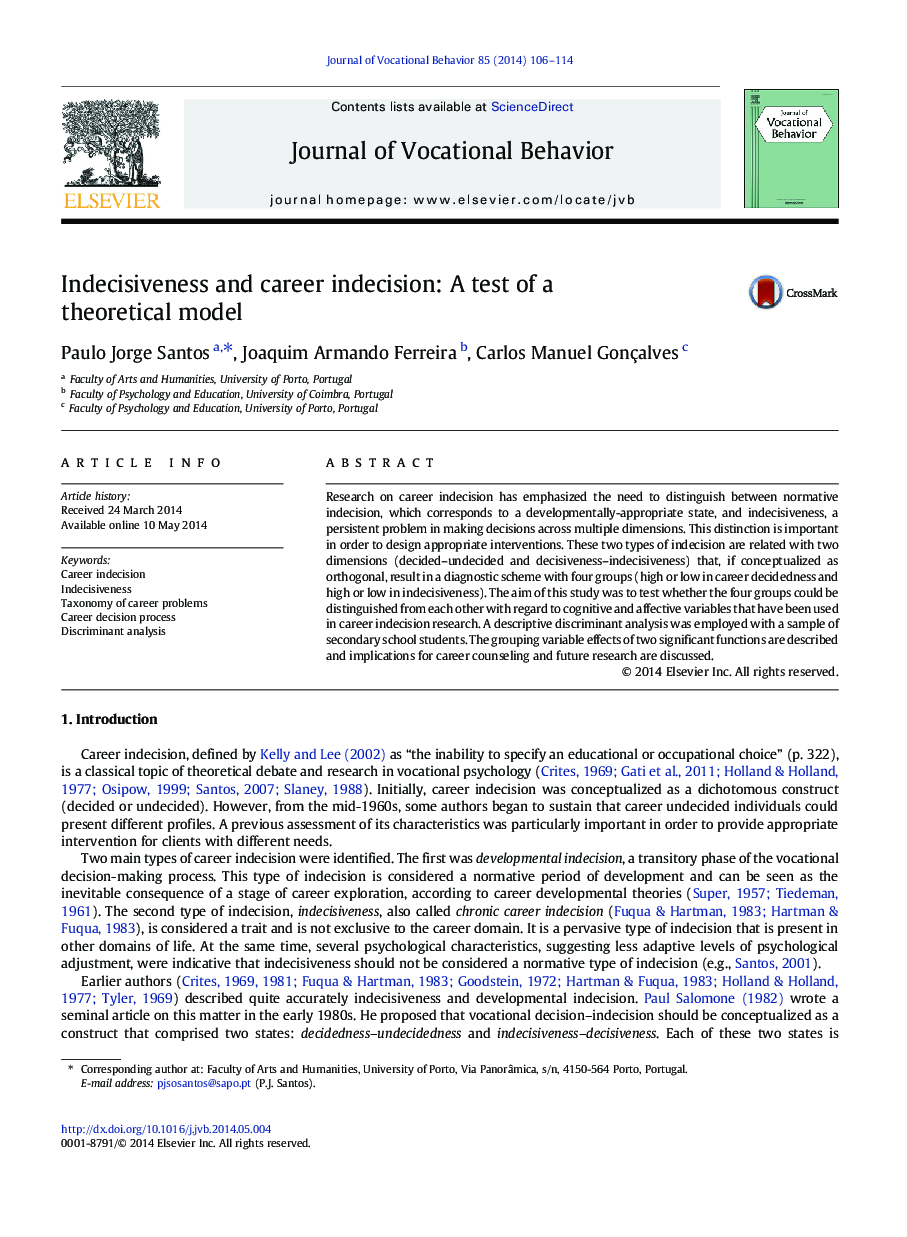| Article ID | Journal | Published Year | Pages | File Type |
|---|---|---|---|---|
| 886870 | Journal of Vocational Behavior | 2014 | 9 Pages |
•A model based on career decidedness and indecisiveness proved to be reliable.•A descriptive discriminant analysis evidenced two significant discriminant functions.•Vocational identity and anxiety contributed most to group discrimination.•Indecisiveness could be considered a multidimensional construct.
Research on career indecision has emphasized the need to distinguish between normative indecision, which corresponds to a developmentally-appropriate state, and indecisiveness, a persistent problem in making decisions across multiple dimensions. This distinction is important in order to design appropriate interventions. These two types of indecision are related with two dimensions (decided–undecided and decisiveness–indecisiveness) that, if conceptualized as orthogonal, result in a diagnostic scheme with four groups (high or low in career decidedness and high or low in indecisiveness). The aim of this study was to test whether the four groups could be distinguished from each other with regard to cognitive and affective variables that have been used in career indecision research. A descriptive discriminant analysis was employed with a sample of secondary school students. The grouping variable effects of two significant functions are described and implications for career counseling and future research are discussed.
